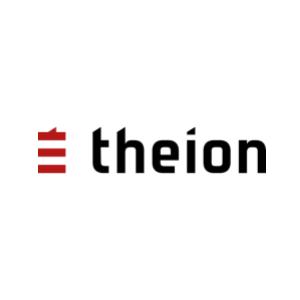CONFIRMED SPEAKERS INCLUDE:
This is where the global industry connects to
RESHAPE the Future of Battery Technologies!
#Solid State Batteries #Beyond Li-Ion #Sodium Batteries #Iron #Lithium-Sulfur #Silicon #Ceramics #Nanocarbons #Titania #AI in Battery Development #Li Metal #Aluminium Batteries #Flow Batteries #Novel Materials #3D Batteries #Advanced Manufacturing #Green Materials
Key themes
Battery Materals for...
Fast Charging
Long Cycle Life
High Energy Density
Geopolitical Independence
High Safety
Environmentally Sustainable Devices
... where the latest technology and commercial developments are announced
... where the key conversations and essential connections take place
... where new ideas, future projects and ecosystems are forged
Unique Attendee Packages
Enjoy live online events with super networking opportunities in an environment that makes online events feel real. Annual access the year-around TechBlick library featuring 1500 talks (video and slides) from across all topics. This library will feature the on-demand version of this event as well as all past and future onsite and online TechBlick and associated events like Perovskite Connect, Graphene Connect, Electronics RESHAPED, etc.
Agenda
We are curating an amazing program for you but below you can see some of confirmed speakers thus far,
covering the latest technology and applications advances in the field.
If you wish to be considered for a talk please
Title of Talk
Wood Mackenzie
Batteries and geopolitics: where does Europe stand?
1:20 PM
joint
Abstract
Alex Cipolla
Manager
Europe's energy storage landscape is undergoing a fundamental transformation driven by strategic policy frameworks aimed at achieving energy independence and climate neutrality by 2050. This presentation examines the technological and supply chain implications of four critical policy instruments reshaping the European battery sector.
The geopolitical imperative stems from Europe's strategic response to eliminating fossil fuel dependence by 2027, mobilizing €400 billion to build domestic battery manufacturing capacity and secure critical supply chains. Key regulatory measures establish supply chain diversification (limiting single-country dependence to 65%), mandate 40% domestic processing and manufacturing by 2030, require 25% recycling targets for battery-grade materials, and introduce digital passports alongside mandatory recycled content requirements (16% cobalt, 6% lithium, 6% nickel by 2031). Fast-track permitting and procurement preferences for compliant manufacturers create structural advantages for early movers in Europe's industrial renaissance.
Technical challenges and opportunities across the value chain will be examined, including infrastructure gaps, compliance system requirements, and the transition from linear to circular manufacturing models.
Wood Mackenzie
1:20 PM
Europe's energy storage landscape is undergoing a fundamental transformation driven by strategic policy frameworks aimed at achieving energy independence and climate neutrality by 2050. This presentation examines the technological and supply chain implications of four critical policy instruments reshaping the European battery sector.
The geopolitical imperative stems from Europe's strategic response to eliminating fossil fuel dependence by 2027, mobilizing €400 billion to build domestic battery manufacturing capacity and secure critical supply chains. Key regulatory measures establish supply chain diversification (limiting single-country dependence to 65%), mandate 40% domestic processing and manufacturing by 2030, require 25% recycling targets for battery-grade materials, and introduce digital passports alongside mandatory recycled content requirements (16% cobalt, 6% lithium, 6% nickel by 2031). Fast-track permitting and procurement preferences for compliant manufacturers create structural advantages for early movers in Europe's industrial renaissance.
Technical challenges and opportunities across the value chain will be examined, including infrastructure gaps, compliance system requirements, and the transition from linear to circular manufacturing models.
Title of Talk
National Research Council of Italy (CNR)
Secondary Raw Materials for Sustainable Next-Generation Electrochemical Energy Conversion and Storage Systems
1:40 PM
joint
Abstract
Francesca De Giorgio
Researcher
The year 2024 was the hottest on record, with global temperatures surpassing 1.5°C above pre-industrial levels for the first time [1]. This milestone highlights the urgent need to deploy clean energy technologies and sustainable materials to reach net-zero emissions by 2050.
A successful transition to renewables requires eco-friendly solutions for electrochemical energy conversion and storage, such as batteries, and supercapacitors [2]. Green strategies — like using secondary raw materials and bio-based resources — are key to enabling this shift.
Ore approach involves the synthesis of non-stoichiometric δ-MnO2 from manganese recovered from Brazilian mining tailings, offering a sustainable route to high-performance anode materials for next-generation batteries [3].
References
[1] The Copernicus Global Climate Highlights Report 2024.
[2] Innovative Advanced Materials for Europe (IAM4EU). Strategic Research and Innovation Agenda (SRIA), November 2024.
[3] Angeletti et al. Sustain. Mater. Technol. 2025, 44, e01347.
National Research Council of Italy (CNR)
1:40 PM
The year 2024 was the hottest on record, with global temperatures surpassing 1.5°C above pre-industrial levels for the first time [1]. This milestone highlights the urgent need to deploy clean energy technologies and sustainable materials to reach net-zero emissions by 2050.
A successful transition to renewables requires eco-friendly solutions for electrochemical energy conversion and storage, such as batteries, and supercapacitors [2]. Green strategies — like using secondary raw materials and bio-based resources — are key to enabling this shift.
Ore approach involves the synthesis of non-stoichiometric δ-MnO2 from manganese recovered from Brazilian mining tailings, offering a sustainable route to high-performance anode materials for next-generation batteries [3].
References
[1] The Copernicus Global Climate Highlights Report 2024.
[2] Innovative Advanced Materials for Europe (IAM4EU). Strategic Research and Innovation Agenda (SRIA), November 2024.
[3] Angeletti et al. Sustain. Mater. Technol. 2025, 44, e01347.
Title of Talk
Up Catalyst
Battery-grade graphite and carbon nanomaterials produced from CO₂
2:00 PM
joint
Abstract
Sebastian Pohlmann
CTO
Carbon materials such as graphite and carbon nanotubes (CNTs) are important in energy storage technologies, particularly in lithium-ion batteries. However, their conventional production—through mining or synthesis from fossil-based feedstocks—has large environmental impacts.
A sustainable alternative is converting CO₂ emissions directly into graphite and CNTs using molten salt carbon capture and electrochemical transformation (MSCC-ET). This energy-efficient process operates at lower temperatures, avoids fossil-based feedstock such as petroleum coke, and allows production of battery-grade graphite with a climate-negative footprint.
The resulting materials meet the performance requirements for advanced battery applications and offer a scalable, cost-competitive solution for local carbon material production.
Up Catalyst
2:00 PM
Carbon materials such as graphite and carbon nanotubes (CNTs) are important in energy storage technologies, particularly in lithium-ion batteries. However, their conventional production—through mining or synthesis from fossil-based feedstocks—has large environmental impacts.
A sustainable alternative is converting CO₂ emissions directly into graphite and CNTs using molten salt carbon capture and electrochemical transformation (MSCC-ET). This energy-efficient process operates at lower temperatures, avoids fossil-based feedstock such as petroleum coke, and allows production of battery-grade graphite with a climate-negative footprint.
The resulting materials meet the performance requirements for advanced battery applications and offer a scalable, cost-competitive solution for local carbon material production.
Title of Talk
Exhibition & Refreshment Break
Exhibition & Refreshment Break
2:20 PM
joint
Abstract
Exhibition & Refreshment Break
2:20 PM
Title of Talk
NEO Battery Materials
Unlocking the Full Potential of Electronics with Silicon-Enhanced Lithium-Ion Batteries
2:50 PM
joint
Abstract
Danny Huh
SVP of Strategy & Operations
With the onset of advanced computing and rising specifications of high-performance electronics, energy storage or batteries have become the main bottleneck in realizing full performance needs. Among the many nascent, emerging battery materials, silicon has become the primary, go-to solution to eliminate performance ceilings. However, steep manufacturing costs and difficulty procuring input precursors limit the integration of silicon anodes in lithium-ion batteries. This talk explores the different types of silicon anode materials and the technical and market opportunities that silicon-enhanced batteries will pave for the electronics industry.
NEO Battery Materials
2:50 PM
With the onset of advanced computing and rising specifications of high-performance electronics, energy storage or batteries have become the main bottleneck in realizing full performance needs. Among the many nascent, emerging battery materials, silicon has become the primary, go-to solution to eliminate performance ceilings. However, steep manufacturing costs and difficulty procuring input precursors limit the integration of silicon anodes in lithium-ion batteries. This talk explores the different types of silicon anode materials and the technical and market opportunities that silicon-enhanced batteries will pave for the electronics industry.
Title of Talk
Sila Nanotechnologies, Inc.
Si/C Taking Over the Anode Market in
3:30 PM
joint
Abstract
Gleb Yushin
Co-founder, CTO
We have invented, brought to market and scaled modern Si/C composites that deliver more energy and power density to lithium-ion batteries and enable faster charge, without compromising the battery safety or cycle life. These materials feature porous conductive scaffolding particles infiltrated with nano-Si and sealed to minimize undesirable side reactions with electrolytes and volume changes during cycling. SiH4 gas is currently used as the Si precursor. This novel class of materials is remarkably robust and can replace graphite in the anodes entirely, making it a game changer for the industry. Millions of devices are already powered by Li-ion batteries with Si/C anodes. In less than a decade nearly all new consumer devices, robots, drones and electric transportation will rely on this material technology. This talk will provide an overview of the latest technical achievements and the technology roadmap for the future.
Sila Nanotechnologies, Inc.
3:30 PM
We have invented, brought to market and scaled modern Si/C composites that deliver more energy and power density to lithium-ion batteries and enable faster charge, without compromising the battery safety or cycle life. These materials feature porous conductive scaffolding particles infiltrated with nano-Si and sealed to minimize undesirable side reactions with electrolytes and volume changes during cycling. SiH4 gas is currently used as the Si precursor. This novel class of materials is remarkably robust and can replace graphite in the anodes entirely, making it a game changer for the industry. Millions of devices are already powered by Li-ion batteries with Si/C anodes. In less than a decade nearly all new consumer devices, robots, drones and electric transportation will rely on this material technology. This talk will provide an overview of the latest technical achievements and the technology roadmap for the future.
Title of Talk
Exhibition & Refreshment Break
Exhibition & Refreshment Break
3:50 PM
joint
Abstract
Exhibition & Refreshment Break
3:50 PM
Title of Talk
TioTech
Next-Generation Battery Materials for Fast-Charging, Durable, and Safer Lithium-Ion Batteries
4:20 PM
joint
Abstract
Anders Teigland
CEO
As the demand for fast-charging, long-life, and safe lithium-ion batteries grows across sectors such as electric mobility, industrial power tools, and stationary storage, the limitations of conventional anode materials are becoming increasingly apparent. Graphite, while energy-dense, struggles with rate capability, cycle life and safety under high loads. Lithium titanate (LTO) , a widely used alternative material for power applications, offers excellent cycle life and thermal stability but is hindered by high cost, low energy density, and energy demanding processing.
This presentation explores the development and industrialization of a new class of titanium-based anode materials designed to address these trade-offs. These materials combine the structural stability and safety profile of LTO with improved energy density and significantly lower production costs. By leveraging abundant raw materials and new and scalable synthesis methods, they offer a compelling pathway toward high-performance, cost-effective, and competitive power-oriented batteries.
We will present key electrochemical performance metrics, including fast-charging capability, long cycle life , and thermal resilience. The talk will also address manufacturability and the importance of consistent quality output, compatibility with existing cell designs, and the broader implications for accelerating the adoption of high-power lithium-ion technologies in a cost-sensitive and sustainability-driven market.
TioTech
4:20 PM
As the demand for fast-charging, long-life, and safe lithium-ion batteries grows across sectors such as electric mobility, industrial power tools, and stationary storage, the limitations of conventional anode materials are becoming increasingly apparent. Graphite, while energy-dense, struggles with rate capability, cycle life and safety under high loads. Lithium titanate (LTO) , a widely used alternative material for power applications, offers excellent cycle life and thermal stability but is hindered by high cost, low energy density, and energy demanding processing.
This presentation explores the development and industrialization of a new class of titanium-based anode materials designed to address these trade-offs. These materials combine the structural stability and safety profile of LTO with improved energy density and significantly lower production costs. By leveraging abundant raw materials and new and scalable synthesis methods, they offer a compelling pathway toward high-performance, cost-effective, and competitive power-oriented batteries.
We will present key electrochemical performance metrics, including fast-charging capability, long cycle life , and thermal resilience. The talk will also address manufacturability and the importance of consistent quality output, compatibility with existing cell designs, and the broader implications for accelerating the adoption of high-power lithium-ion technologies in a cost-sensitive and sustainability-driven market.
Title of Talk
University of Warwick - WMG
Enabling sustainable sodium-ion batteries, from materials to
cell development
4:40 PM
joint
Abstract
Ivana Hasa
Associate Professor of Electrochemical Materials
Several emerging battery technologies are currently considered to take the share of the
dominant position taken by lithium-ion batteries (LIBs). Sodium-ion batteries (SIBs) are
among the most promising alternatives, offering significant advantages such as greater
sustainability, lower projected material costs, compatibility with existing LIB manufacturing
facilities, and enhanced safety features like 0V storage capability.
The recent industrial investments reflect the accelerated progress toward commercial
viability. However, SIBs still face challenges, particularly their lower energy density
compared to LIBs. While several cathode materials have been proposed, hard carbon (HC)
has become the preferred anode for SIBs.
This presentation highlights the development of 1Ah sodium-ion pouch cells using Prussian
White (PW) cathodes and biomass-derived HC anodes. Both electrodes are processed in
water, aligning with goals of low toxicity, cost, and environmental impact. However, the
inherently low density of PW and HC limits the cells' volumetric energy density. To overcome
this, alloying-type anodes like tin (Sn) are being investigated for their high capacity,
conductivity, and density. Despite challenges like volume expansion during cycling, our
research shows that micrometric Sn can form a stable, porous “coral-like” network that
resists structural degradation—even at high Sn content. This morphology enables improved
volumetric energy density and paves the way for more commercially competitive SIBs.
University of Warwick - WMG
4:40 PM
Several emerging battery technologies are currently considered to take the share of the
dominant position taken by lithium-ion batteries (LIBs). Sodium-ion batteries (SIBs) are
among the most promising alternatives, offering significant advantages such as greater
sustainability, lower projected material costs, compatibility with existing LIB manufacturing
facilities, and enhanced safety features like 0V storage capability.
The recent industrial investments reflect the accelerated progress toward commercial
viability. However, SIBs still face challenges, particularly their lower energy density
compared to LIBs. While several cathode materials have been proposed, hard carbon (HC)
has become the preferred anode for SIBs.
This presentation highlights the development of 1Ah sodium-ion pouch cells using Prussian
White (PW) cathodes and biomass-derived HC anodes. Both electrodes are processed in
water, aligning with goals of low toxicity, cost, and environmental impact. However, the
inherently low density of PW and HC limits the cells' volumetric energy density. To overcome
this, alloying-type anodes like tin (Sn) are being investigated for their high capacity,
conductivity, and density. Despite challenges like volume expansion during cycling, our
research shows that micrometric Sn can form a stable, porous “coral-like” network that
resists structural degradation—even at high Sn content. This morphology enables improved
volumetric energy density and paves the way for more commercially competitive SIBs.
Title of Talk
Tyfast
Enabling Diesel Grade Batteries for Heavy Duty Vehicles using Novel LVO Anode
5:20 PM
joint
Abstract
Gj La O'
CEO, Co-founder
Heavy-duty electric vehicles demand batteries that deliver diesel-like performance in power, charging speed, and lifetime. The novel lithium vanadium oxide (LVO) anode overcomes the limitations of conventional graphite materials by enabling ultrafast charge capability without compromising energy density or cycle life. The unique crystal structure and redox behavior of LVO provide exceptional lithium-ion mobility and structural stability under high-rate operation. Paired with high-voltage cathodes, the LVO-based cells achieve rapid charge cycles, long-term durability, and superior thermal safety suitable for commercial and industrial workhorse vehicles. This technology establishes a new class of diesel-grade batteries engineered specifically for the electrification of demanding heavy-duty transport.
Tyfast
5:20 PM
Heavy-duty electric vehicles demand batteries that deliver diesel-like performance in power, charging speed, and lifetime. The novel lithium vanadium oxide (LVO) anode overcomes the limitations of conventional graphite materials by enabling ultrafast charge capability without compromising energy density or cycle life. The unique crystal structure and redox behavior of LVO provide exceptional lithium-ion mobility and structural stability under high-rate operation. Paired with high-voltage cathodes, the LVO-based cells achieve rapid charge cycles, long-term durability, and superior thermal safety suitable for commercial and industrial workhorse vehicles. This technology establishes a new class of diesel-grade batteries engineered specifically for the electrification of demanding heavy-duty transport.
Title of Talk

Theion GmbH
3D Host Structures for Stable Lithium-Metal Anodes
5:20 PM
joint
Abstract
Youngju Lee
Lithium metal anodes offer an exceptionally high theoretical capacity of 3860 mAh g⁻¹ and the lowest negative electrochemical potential among known anode materials, making them a promising candidate for next-generation batteries. However, their practical application is hindered by critical safety challenges, including dendritic growth that can induce short-circuits, and thermal hazards arising from the high reactivity of lithium, especially in porous structures. Various approaches have been explored to mitigate these issues—such as solid and semi-solid electrolytes, tailored electrolyte formulations and additives, conformal surface coatings, and engineered current collectors—but many face limitations under lean-electrolyte and low-stack-pressure conditions. Recently, 3D host structures have emerged as a compelling strategy to confine lithium deposition and regulate Li-ion flux, enabling compact, non-porous lithium growth and improved cycling stability. This presentation will discuss the fundamental principles of lithium-metal anodes, review recent advances in host-structure design, and outline pathways toward integrating such architectures into practical cell configurations.
Theion GmbH
5:20 PM
Lithium metal anodes offer an exceptionally high theoretical capacity of 3860 mAh g⁻¹ and the lowest negative electrochemical potential among known anode materials, making them a promising candidate for next-generation batteries. However, their practical application is hindered by critical safety challenges, including dendritic growth that can induce short-circuits, and thermal hazards arising from the high reactivity of lithium, especially in porous structures. Various approaches have been explored to mitigate these issues—such as solid and semi-solid electrolytes, tailored electrolyte formulations and additives, conformal surface coatings, and engineered current collectors—but many face limitations under lean-electrolyte and low-stack-pressure conditions. Recently, 3D host structures have emerged as a compelling strategy to confine lithium deposition and regulate Li-ion flux, enabling compact, non-porous lithium growth and improved cycling stability. This presentation will discuss the fundamental principles of lithium-metal anodes, review recent advances in host-structure design, and outline pathways toward integrating such architectures into practical cell configurations.
Title of Talk
Exhibition & Refreshment Break
Exhibition & Refreshment Break
5:40 PM
joint
Abstract
Exhibition & Refreshment Break
5:40 PM
Title of Talk

P3 automotive GmbH
Discovery of recent Solid-State Battery Developments: Will they hit mass production sooner than expected?
6:10 PM
joint
Abstract

Behnoosh Bornamehr
P3 automotive GmbH
6:10 PM
Title of Talk
General Motors Global R&D Center
Solid-State Electrolytes for Lithium Sulfur Batteries
6:50 PM
joint
Abstract
Thomas Yersak
Senior Researcher
In this talk we review how solid-state electrolytes (SSEs) can be used to improve the performance of lithium sulfur batteries. The design strategy for a semi-solid lithium sulfur battery depends on which type of liquid electrolyte is used. For highly solvating liquid electrolytes, an impermeable SSE separator can be used to block the parasitic polysulfide redox shuttle. For sparingly solvating liquid electrolytes, a SSE powder cathode additive can be used to improve rate performance and active material utilization. The merits of each design will be discussed and compared with a particular focus on cell-level safety.
General Motors Global R&D Center
6:50 PM
In this talk we review how solid-state electrolytes (SSEs) can be used to improve the performance of lithium sulfur batteries. The design strategy for a semi-solid lithium sulfur battery depends on which type of liquid electrolyte is used. For highly solvating liquid electrolytes, an impermeable SSE separator can be used to block the parasitic polysulfide redox shuttle. For sparingly solvating liquid electrolytes, a SSE powder cathode additive can be used to improve rate performance and active material utilization. The merits of each design will be discussed and compared with a particular focus on cell-level safety.
Title of Talk
Stanford University
Towards Scalable Processing of Amorphous LLZO for Solid State Batteries
7:10 PM
joint
Abstract
Gabriel Crane
PHD Candidate
Solid-state lithium batteries show promise as a leading technology for next-generation high-energy-density storage, with the ceramic oxide Lithium Lanthanum Zirconium Oxide (LLZO) emerging as a key candidate for solid-state electrolytes due to its high ionic conductivity. However, commercial development has faced significant hurdles in the scalable processing of low-defectivity thin films in a manner suitable for mass-market battery applications. In this defense, I present our research on the formation of amorphous LLZO (a-LLZO) using a blown-arc nitrogen plasma technique to rapidly form thin film a-LLZO, then evaluate the viability of a-LLZO for scalable applications in contrast with the more commonly researched cubic phase.
Stanford University
7:10 PM
Solid-state lithium batteries show promise as a leading technology for next-generation high-energy-density storage, with the ceramic oxide Lithium Lanthanum Zirconium Oxide (LLZO) emerging as a key candidate for solid-state electrolytes due to its high ionic conductivity. However, commercial development has faced significant hurdles in the scalable processing of low-defectivity thin films in a manner suitable for mass-market battery applications. In this defense, I present our research on the formation of amorphous LLZO (a-LLZO) using a blown-arc nitrogen plasma technique to rapidly form thin film a-LLZO, then evaluate the viability of a-LLZO for scalable applications in contrast with the more commonly researched cubic phase.
Title of Talk
END
END
7:30 PM
joint
Abstract
END
7:30 PM
11 February 2026
12 February 2026
Title of Talk
TOYOTA RESEARCH INSTITUTE
Artificial Intelligence and ML in battery material development and discovery
1:20 PM
joint
Abstract
Hisatsugu Yamasaki
TOYOTA RESEARCH INSTITUTE
1:20 PM
Title of Talk
Gaussion
Magnetic Fields for Battery Technologies: Scientific Foundations and Real-World Applications
1:40 PM
joint
Abstract
Aaron Wade
Business Development Lead
Join this talk for an in-depth exploration about how magnetic fields can be applied to current and next-generation batteries to enhance their performance.
The talk will begin with a technical deep dive in the science of magnetic fields, focusing on their impact on lithium-ion transport and energy efficiency, citing key academic papers in the area.
The second half will transition into real world insights, presenting case studies that showcase how magnetic fields can be used to enhance battery performance to overcome three of the key industrial challenges that are limiting EV adoption; charging speed, energy density/range, and affordability.
Gaussion
1:40 PM
Join this talk for an in-depth exploration about how magnetic fields can be applied to current and next-generation batteries to enhance their performance.
The talk will begin with a technical deep dive in the science of magnetic fields, focusing on their impact on lithium-ion transport and energy efficiency, citing key academic papers in the area.
The second half will transition into real world insights, presenting case studies that showcase how magnetic fields can be used to enhance battery performance to overcome three of the key industrial challenges that are limiting EV adoption; charging speed, energy density/range, and affordability.
Title of Talk
Exhibition & Refreshment Break
Exhibition & Refreshment Break
2:20 PM
joint
Abstract
Exhibition & Refreshment Break
2:20 PM
Title of Talk
FAAM
An Italian Battery Reality
2:50 PM
joint
Abstract
Carmen Cavallo
R&D Senior Material Scientist
An Italian Battery Reality explores the dynamic growth and strategic positioning of FAAM as a key player in Europe’s evolving battery landscape. Originally founded to produce lead-acid batteries, FAAM has transformed into a cutting-edge manufacturer of lithium-based solutions, specialising in cells, modules, and packs for energy storage systems (ESS) and industrial applications. This presentation traces FAAM’s innovation journey, highlighting the company’s technological shift toward sustainable, high-performance battery manufacturing. It focuses on FAAM’s leadership in lithium iron phosphate (LFP) chemistry, selected for its safety, long cycle life, and environmental advantages, positioning FAAM to meet the growing demands of stationary storage and renewable energy markets. At the centre of the session is the Teverola gigafactory — a pioneering facility in Southern Italy designed to strengthen Italy’s and Europe’s battery value chain. The plant integrates advanced manufacturing of prismatic LFP cells (ranging from 50Ah to 300Ah), ESS battery packs, and research into new materials and processes. FAAM’s Teverola project is not just about scaling production, but about innovating sustainably, with initiatives including internal recycling of production scrap, slurry, and end-of-life (EOL) batteries to create a closed-loop system. FAAM’s evolution reflects a broader industrial and technological renaissance within Italy — where traditional manufacturing expertise is now driving the future of clean energy solutions. By combining strong industrial roots with forward-thinking R&D, FAAM is actively contributing to Europe's energy transition and technological independence. Attendees will gain a firsthand look at how FAAM is turning ambition into reality, building a sustainable battery industry in Italy for Europe and beyond.
FAAM
2:50 PM
An Italian Battery Reality explores the dynamic growth and strategic positioning of FAAM as a key player in Europe’s evolving battery landscape. Originally founded to produce lead-acid batteries, FAAM has transformed into a cutting-edge manufacturer of lithium-based solutions, specialising in cells, modules, and packs for energy storage systems (ESS) and industrial applications. This presentation traces FAAM’s innovation journey, highlighting the company’s technological shift toward sustainable, high-performance battery manufacturing. It focuses on FAAM’s leadership in lithium iron phosphate (LFP) chemistry, selected for its safety, long cycle life, and environmental advantages, positioning FAAM to meet the growing demands of stationary storage and renewable energy markets. At the centre of the session is the Teverola gigafactory — a pioneering facility in Southern Italy designed to strengthen Italy’s and Europe’s battery value chain. The plant integrates advanced manufacturing of prismatic LFP cells (ranging from 50Ah to 300Ah), ESS battery packs, and research into new materials and processes. FAAM’s Teverola project is not just about scaling production, but about innovating sustainably, with initiatives including internal recycling of production scrap, slurry, and end-of-life (EOL) batteries to create a closed-loop system. FAAM’s evolution reflects a broader industrial and technological renaissance within Italy — where traditional manufacturing expertise is now driving the future of clean energy solutions. By combining strong industrial roots with forward-thinking R&D, FAAM is actively contributing to Europe's energy transition and technological independence. Attendees will gain a firsthand look at how FAAM is turning ambition into reality, building a sustainable battery industry in Italy for Europe and beyond.
Title of Talk
Exhibition & Refreshment Break
Exhibition & Refreshment Break
3:50 PM
joint
Abstract
Exhibition & Refreshment Break
3:50 PM
Title of Talk
Elestor hydrogen flow battery
LDES_hydrogen-iron flow batteries, scalable without limits
4:40 PM
joint
Abstract
Floris Van Dijk
Business Development Manager
Elestor B.V. is a Dutch deep-tech company developing the next-generation, long-duration energy storage through its breakthrough hydrogen-iron flow battery technology. Engineered to solve one of the most pressing challenges in the energy transition: grid-scale, cost-effective storage. Elestor's solution unlocks the full potential of renewables by bridging supply-demand mismatches at an unprecedented low cost per MWh. With a capital-efficient approach and a strong IP position, Elestor is uniquely positioned to become a category-defining player in the global energy storage market.
Elestor hydrogen flow battery
4:40 PM
Elestor B.V. is a Dutch deep-tech company developing the next-generation, long-duration energy storage through its breakthrough hydrogen-iron flow battery technology. Engineered to solve one of the most pressing challenges in the energy transition: grid-scale, cost-effective storage. Elestor's solution unlocks the full potential of renewables by bridging supply-demand mismatches at an unprecedented low cost per MWh. With a capital-efficient approach and a strong IP position, Elestor is uniquely positioned to become a category-defining player in the global energy storage market.
Title of Talk
Jena Flow Batteries
Metal-free flow batteries: intrinsically safe, long-life energy storage without scarce metals
5:00 PM
joint
Abstract
Tobias Janoschka
CTO
Large-scale energy storage must be as safe and reliable as the grids it supports. Metal-free flow batteries rise to this challenge by using inherently safe water-based electrolytes and delivering long cycle life, all without depending on scarce metals.
In these batteries, inexpensive organic redox molecules are dissolved in benign salt solutions and circulated from external tanks through a compact cell stack. Because energy (tank volume) and power (stack size) are decoupled, systems can be scaled straightforwardly from kilowatt-hour to multi-megawatt-hour installations. The non-flammable electrolytes operate near ambient pressure, making the technology inherently immune to thermal runaway and suitable for deployment in sensitive environments without elaborate fire-mitigation measures. By eliminating scarce active materials, we reduce supply-chain risk, simplify recycling, and extend component life. Flexible, modular design further allows application-specific tuning, from frequency regulation and peak-shifting to long-duration energy storage.
This talk will explain the underlying technology, highlight the key materials, and explore how metal-free flow batteries have been scaled to become a cornerstone of safe, durable, and sustainable stationary storage.
Jena Flow Batteries
5:00 PM
Large-scale energy storage must be as safe and reliable as the grids it supports. Metal-free flow batteries rise to this challenge by using inherently safe water-based electrolytes and delivering long cycle life, all without depending on scarce metals.
In these batteries, inexpensive organic redox molecules are dissolved in benign salt solutions and circulated from external tanks through a compact cell stack. Because energy (tank volume) and power (stack size) are decoupled, systems can be scaled straightforwardly from kilowatt-hour to multi-megawatt-hour installations. The non-flammable electrolytes operate near ambient pressure, making the technology inherently immune to thermal runaway and suitable for deployment in sensitive environments without elaborate fire-mitigation measures. By eliminating scarce active materials, we reduce supply-chain risk, simplify recycling, and extend component life. Flexible, modular design further allows application-specific tuning, from frequency regulation and peak-shifting to long-duration energy storage.
This talk will explain the underlying technology, highlight the key materials, and explore how metal-free flow batteries have been scaled to become a cornerstone of safe, durable, and sustainable stationary storage.
Title of Talk
Pacific Northwest National Lab
Aqueous all soluble Fe redox flow batteries for large scale energy storage applications
5:20 PM
joint
Abstract
Guosheng Li
Sr. Scientist
Iron, as one of the Earth's most prevalent elements, presents numerous advantages over scarce and costly materials such as cobalt and nickel. The natural abundance of iron results in lower raw material expenses, making Fe-based battery chemistries more economically feasible, particularly for large-scale uses like grid energy storage. The abundance of iron is a key factor in advancing battery technologies that necessitate affordable and scalable energy storage solutions. Beyond the economic advantages, iron's electrochemical properties facilitate stable redox reactions, which are essential for energy storage systems. Additionally, iron's low toxicity and widespread geographic availability mitigate supply chain risks, bolstering long-term sustainability. These characteristics render Fe-based batteries highly suitable for stationary energy storage and other extensive applications where cost, safety, and durability are critical. This presentation will explore the growing interest in all-soluble Fe-RFB technologies. Unlike conventional hybrid Fe-RFB systems that utilize a hybrid anode, all-soluble Fe-RFB employs soluble electrolytes for both the anode and cathode sides, similar to vanadium RFB systems. This approach allows for the decoupling of energy and power—addressing a key technical challenge faced by conventional hybrid Fe flow batteries—thus overcoming technical limitations and enhancing operational scalability.
Pacific Northwest National Lab
5:20 PM
Iron, as one of the Earth's most prevalent elements, presents numerous advantages over scarce and costly materials such as cobalt and nickel. The natural abundance of iron results in lower raw material expenses, making Fe-based battery chemistries more economically feasible, particularly for large-scale uses like grid energy storage. The abundance of iron is a key factor in advancing battery technologies that necessitate affordable and scalable energy storage solutions. Beyond the economic advantages, iron's electrochemical properties facilitate stable redox reactions, which are essential for energy storage systems. Additionally, iron's low toxicity and widespread geographic availability mitigate supply chain risks, bolstering long-term sustainability. These characteristics render Fe-based batteries highly suitable for stationary energy storage and other extensive applications where cost, safety, and durability are critical. This presentation will explore the growing interest in all-soluble Fe-RFB technologies. Unlike conventional hybrid Fe-RFB systems that utilize a hybrid anode, all-soluble Fe-RFB employs soluble electrolytes for both the anode and cathode sides, similar to vanadium RFB systems. This approach allows for the decoupling of energy and power—addressing a key technical challenge faced by conventional hybrid Fe flow batteries—thus overcoming technical limitations and enhancing operational scalability.
Title of Talk
Exhibition & Refreshment Break
Exhibition & Refreshment Break
5:40 PM
joint
Abstract
Exhibition & Refreshment Break
5:40 PM
Title of Talk
Solvionic
Non-flammable electrolytes as solid-state batteries enhancers
6:10 PM
joint
Abstract
Sebastien Fantini
R&D Project Manager
Solid-state batteries (SSBs) pave the way to safer and higher energy density batteries. But the performances of their electrolytes remain a hurdle, as they most often lead to poor contact and ion transfer across interfaces. This is why the addition of organic liquid electolytes to form gel electrolytes and/or to “wet” the interfaces is widely used by SSB developers to enhance performances. While this strategy efficiently lowers the interfacial resistance, it is detrimental to safety. This presentation details the performances of a range of high voltage and nonflammable liquid electrolytes, for several anodes and cathodes chemistries. It also shows how such electrolytes help to unlock SSBs technology by enhancing ion transfer across interfaces, increasing ionic conductivity of solid-state electrolytes, eliminating the requirement of stack pressure application, while preserving safety properties.
Solvionic
6:10 PM
Solid-state batteries (SSBs) pave the way to safer and higher energy density batteries. But the performances of their electrolytes remain a hurdle, as they most often lead to poor contact and ion transfer across interfaces. This is why the addition of organic liquid electolytes to form gel electrolytes and/or to “wet” the interfaces is widely used by SSB developers to enhance performances. While this strategy efficiently lowers the interfacial resistance, it is detrimental to safety. This presentation details the performances of a range of high voltage and nonflammable liquid electrolytes, for several anodes and cathodes chemistries. It also shows how such electrolytes help to unlock SSBs technology by enhancing ion transfer across interfaces, increasing ionic conductivity of solid-state electrolytes, eliminating the requirement of stack pressure application, while preserving safety properties.
Title of Talk
Octet Scientific
Novel Electrolyte Additives for Denser, Longer Lasting, and More Efficient Aqueous Batteries
6:30 PM
joint
Abstract
Onas Bolton
CEO, Founder
Water-based batteries that utilize safe, economical, scalable, and sustainable metals like iron, zinc, and lead are attractive options for meeting the daunting energy storage needs of the future. These batteries are generally nonflammable, reliable, rugged, widely sourced, economical, long-lasting, and easily recyclable, making them a more ideal fit for large-scale storage. However, if aqueous batteries are to compete with mature and well-supported incumbents (i.e. lithium batteries), aqueous battery performance must improve and scale very quickly. To help optimize aqueous batteries rapidly, organic electrolyte additives offer an elegant and impactful option.
With careful design, informed empirically via hundreds of molecular candidates, organic additives have been identified that selectively prevent dendrite formation, hydrogen evolution, shape change, and other deleterious side reactions in a variety of aqueous batteries: different metals, cathodes, pHs, and salts. As presented in this talk, additives have been created that can raise battery capacity by 25%, round trip efficiency by 10%, and cycle life by 100%. This talk will discuss the approach used to identify and elucidate the molecular design principles employed as well as the impact and sensitivity of organic molecular structure on aqueous battery performance.
Octet Scientific
6:30 PM
Water-based batteries that utilize safe, economical, scalable, and sustainable metals like iron, zinc, and lead are attractive options for meeting the daunting energy storage needs of the future. These batteries are generally nonflammable, reliable, rugged, widely sourced, economical, long-lasting, and easily recyclable, making them a more ideal fit for large-scale storage. However, if aqueous batteries are to compete with mature and well-supported incumbents (i.e. lithium batteries), aqueous battery performance must improve and scale very quickly. To help optimize aqueous batteries rapidly, organic electrolyte additives offer an elegant and impactful option.
With careful design, informed empirically via hundreds of molecular candidates, organic additives have been identified that selectively prevent dendrite formation, hydrogen evolution, shape change, and other deleterious side reactions in a variety of aqueous batteries: different metals, cathodes, pHs, and salts. As presented in this talk, additives have been created that can raise battery capacity by 25%, round trip efficiency by 10%, and cycle life by 100%. This talk will discuss the approach used to identify and elucidate the molecular design principles employed as well as the impact and sensitivity of organic molecular structure on aqueous battery performance.
Title of Talk
Magnera
Unique Battery Separator from Melt Blown Process
6:50 PM
joint
Abstract
Dave Rittenhouse
Head of Advanced Battery Materials Group
A discussion will be provided of a novel battery separator that is produced using a melt blowing production process. The physical properties of the separator will be highlighted and compared to those of current commercial separators. Battery test data will be presented and the advantages that are provided by the new separator will be the focus of the presentation.
Magnera
6:50 PM
A discussion will be provided of a novel battery separator that is produced using a melt blowing production process. The physical properties of the separator will be highlighted and compared to those of current commercial separators. Battery test data will be presented and the advantages that are provided by the new separator will be the focus of the presentation.
Title of Talk
7:10 PM
joint
Abstract
7:10 PM
Title of Talk
Zinergy
Printable Zinc batteries
7:10 PM
joint
Abstract
Pritesh Hiralal
Research Associate
Zinergy
7:10 PM
Title of Talk
END
END
7:30 PM
joint
Abstract
END
7:30 PM
Explore talks from our past event accessible with your pass
SPEAKERS FROM OUR PAST EVENTS:

Enjoy a curated world-class agenda and masterclass programme, experience and feel the latest technologies and connect with peers, partners, and customers from around the world.
This cutting-edge event is the first ever event worldwide dedicated to the perovskite industry, attracting the global community from applied researchers and material suppliers to equipment makers, manufacturers and end users across all application areas.

This event will be co-located with The Future of Electronics SHAPED Conference and Exhibition
This event is the global home of the printed, flexible, large-area and roll-to-roll (R2R) electronics industry, including all aspects of ink formulation, coating, printing, inkjetting, and R2R production. This is a highly synergetic event as these technologies will play a key role in development and volume production of perovskites. These co-located events will feature over 600 participants, 80 exhibitors, and 70 talks.
























